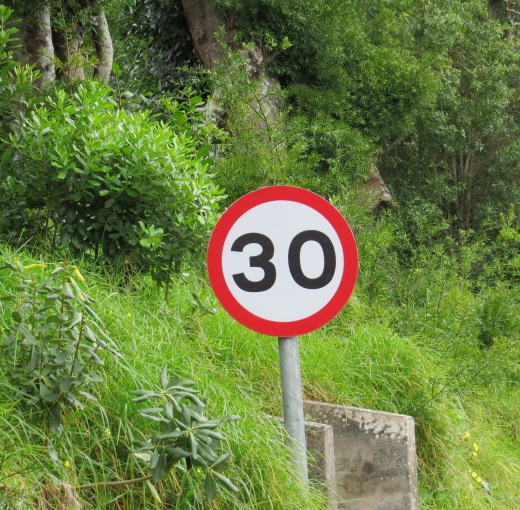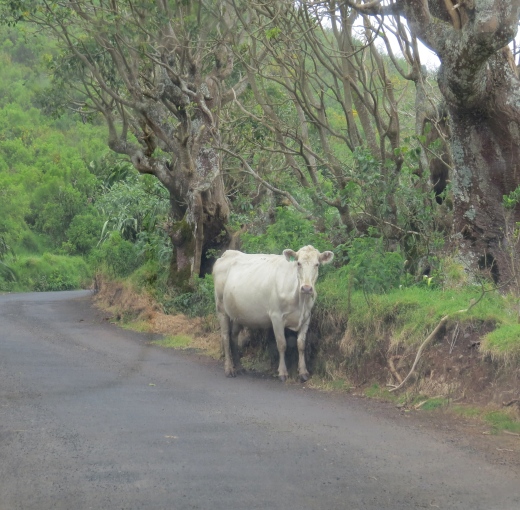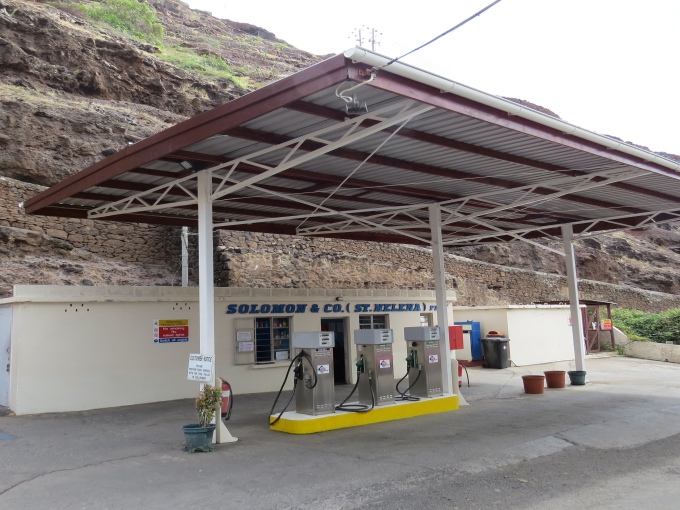The Blue View - St. Helena Driving Tips
/The scenery on St. Helena Island is fabulous, with mountain and sea vistas everywhere. We wanted to explore as much of it as we could, so we hired a car for a few days.The total area of St. Helena is about 47 square miles. I don't know how many actual miles of road there are, but I do know we drove most of them. The driving here is somewhat different than in other places, and I thought I'd share a few driving tips I discovered.

Drive on the left.
This is a British territory, so you drive on the left here. If you aren't used to driving on the left, it's easy to forget and find yourself in the wrong lane. Even harder is remembering which lever is the turn signal and which is for the wiper blades. These are reversed in a right hand drive vehicle. You can always tell when an American is driving, because we signal our turns with the windshield wipers.
The car.
Don't expect that sparkling new car that you might rent from Avis or Hertz. Our car was a rather battered, sixteen year old Toyota. When we did our initial inspection, rather than making note of any scratches and dings, we noted the areas that weren't dented. The clutch engaged about an inch off the floor and it took about three tries to get it into reverse. The “check engine” light was on, and the ignition switch apparently gave it up some time ago. The door locks weren't a problem as no one locks their car here anyway. To start the car, the ignition was switched on with a toggle switch, then a pushbutton switch was pressed to engage the starter. The modified system worked just fine, and eliminated the need for such superfluous things as keys. Despite its age and condition, it ran just fine and we had no problems with it.
The emergency brake.
The most important item on the car – make sure it works. I used it not only for keeping the car where I left it when it was parked on a steep incline, but as an aid when starting up after stopping on a hill.
The horn.
The horn is the second most important item on the car. It is used frequently when approaching one of the hundreds of blind, hairpin curves on the narrow roadways to warn drivers coming from the other direction.
Speed.
Distances are in miles and speeds are in miles-per-hour – the only place outside the U.S. we've been that doesn't use metric units. The maximum speed limit on the island is 30 MPH. I thought of it as more of a goal than a limit – in four days of driving, I don't think I found a stretch of road I could go that fast.
Right-of-way.
When two cars approach each other, the car going uphill has the right-of-way. If the road is too narrow for the cars to pass, the car going downhill has to back up until the road is wide enough. We had to back up a good quarter of a mile when we encountered a car as we were leaving the High Knoll Fort after our visit there.
Standard Transmission.
As is the case in most places outside the U.S., the rental cars are all standard transmission. On St. Helena, it is only necessary to have a two speed transmission, however. I never had occasion to drive fast enough to use 3rd, 4th or 5th gears.
Waving.
Every driver and pedestrian we encountered waved to us. We got into the habit of waving back, although it was difficult at times when I was busy downshifting from 2nd to 1st while blowing the horn and shutting off the wipers after signaling a turn.
Obstacles on the roadway.
In Tasmania, we were constantly on the lookout for marsupials in the roadway – wallabies, wombats, Tasmania devils, etc. In South Africa, we were watchful for boks – springboks, rheboks, gemsbok and kudus. Here it was the occasional goat leaping out or the odd cow lying in the road. And the island is a laid back, slow paced kind of place. It is not unusual for someone to stop their car in the road and have a nice chat with a friend walking along. We encountered a car parked in the middle of the road with four or five people standing next to it. I stopped and asked whether they were having problems. “Nope – just having a yarn” was the reply. We soon learned that no one had a problem when we stopped in the road to take a photo or admire a view.
The roads.
While the roads are narrow and steep with switchbacks and blind curves everywhere, they are in quite good shape. Most are paved and have very few pot holes, and with few exceptions, the gravel roads we traveled were smooth and well graded.
Fuel.
Fueling up requires some planning. There are only four gas stations on the island, and their hours are limited. No fuel is available on Sundays, and they are all cash only.
Maps.
The local tourist road maps are confusing. They don't show all the roads, aren't quite to scale, and since many roads don't have signs, we were often not quite sure as to where we were or which fork to take. I suppose some people would refer to this as being lost, but I think that is far too strong a term. Anyway, Marcie had had the foresight to download the St. Helena maps for our iPad app “Maps with Me”, which was amazingly accurate and detailed. After our first day of driving using the local paper road map, we relied on the electronic map and had no problems.
Overall, we had a great time driving the island. Other than a few stressful moments getting used to the driving etiquette here, we had no problems. The car ran fine and the other drivers were forgiving of my mistakes. And by Day 4, not only was I getting into the car on the correct side, I was better than 50-50 when signaling a turn.






